Kubernetes Autoscaling
Cluster Proportional Autoscaler CPA
Pod Priority and Preemption
Kubernetes scheduling includes built-in support for Pod Priority and Preemption, which ensures that critical workloads receive resources first. By defining priority classes and leveraging preemption, you can maintain high availability and efficient resource utilization across your cluster.
Pod Priority
Consider a concert hall with limited seats and attendees such as VIPs, general guests, and staff. When seats run out, you want VIPs and staff to be guaranteed a spot. In Kubernetes, CPU and memory are finite “seats,” and Pods are the “attendees.” Assigning priorities ensures your most important services always run.
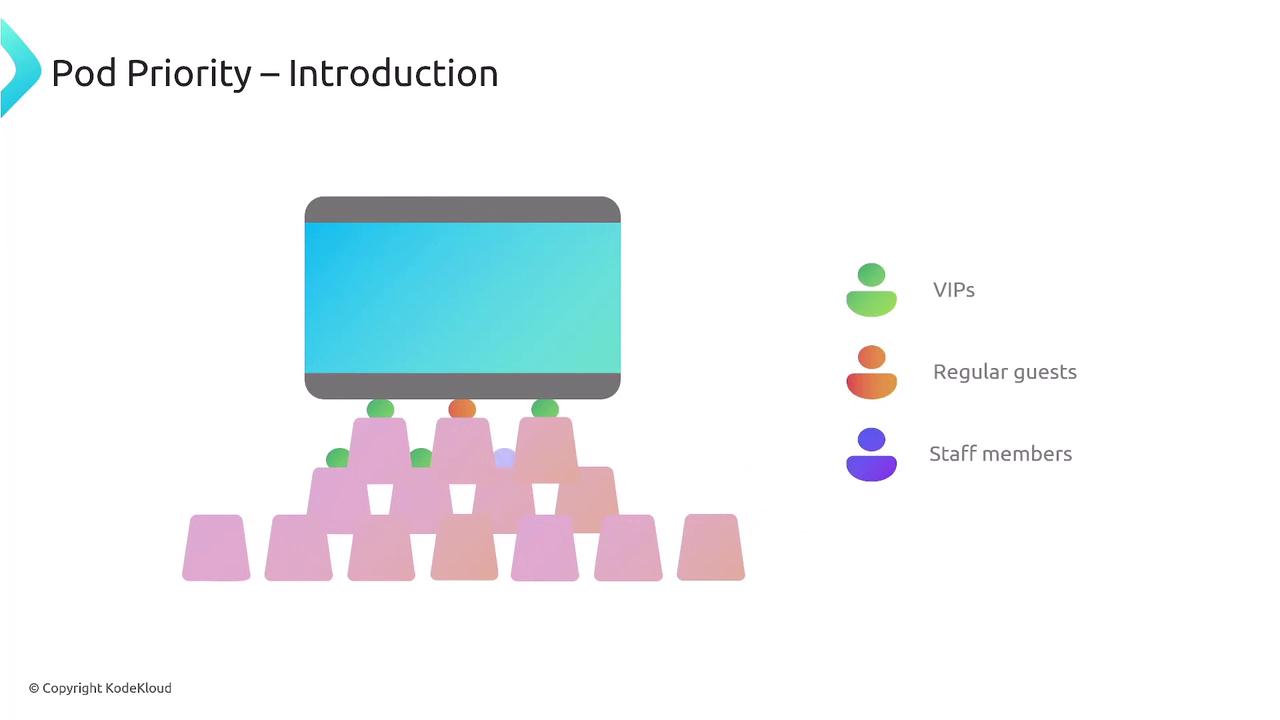
Seats = cluster resources (CPU, memory)
People = Pods (applications)
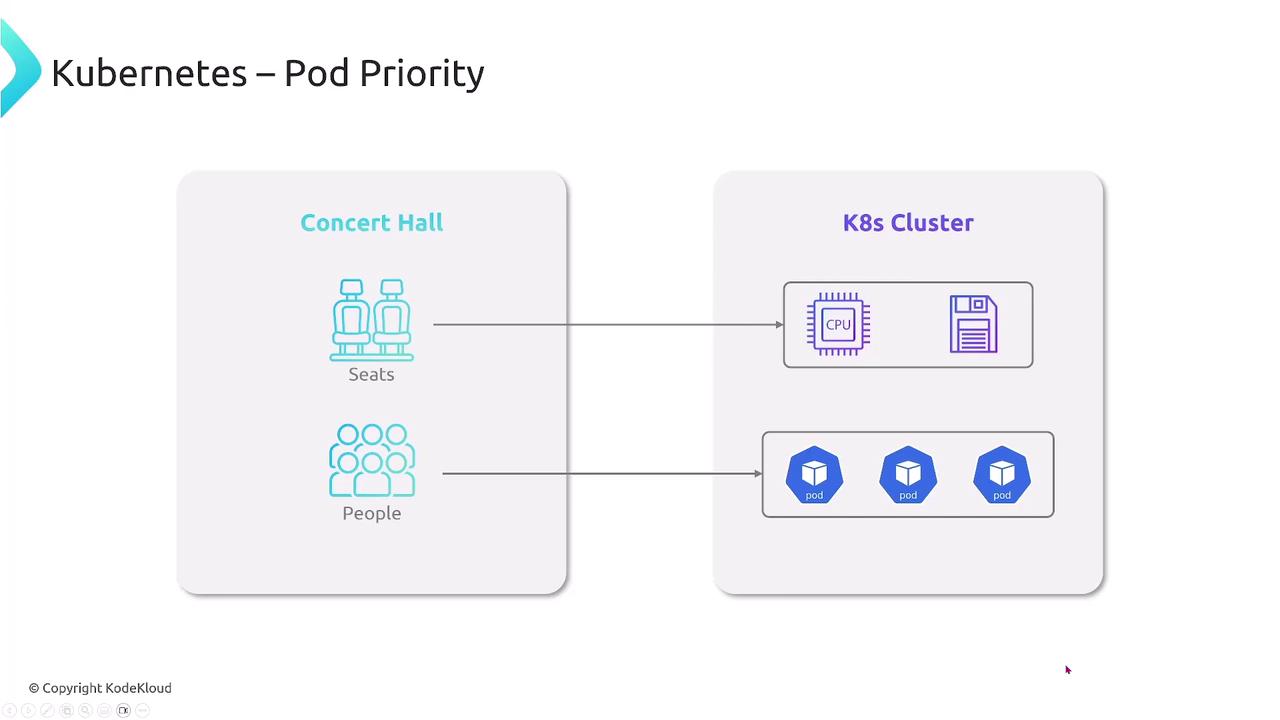
Kubernetes groups Pods into three priority tiers:
- System-critical Pods (e.g., kube-apiserver, kube-scheduler)
- Application-critical Pods (e.g., payment-processing, order API)
- Low-priority Pods (e.g., batch jobs, CI tasks)
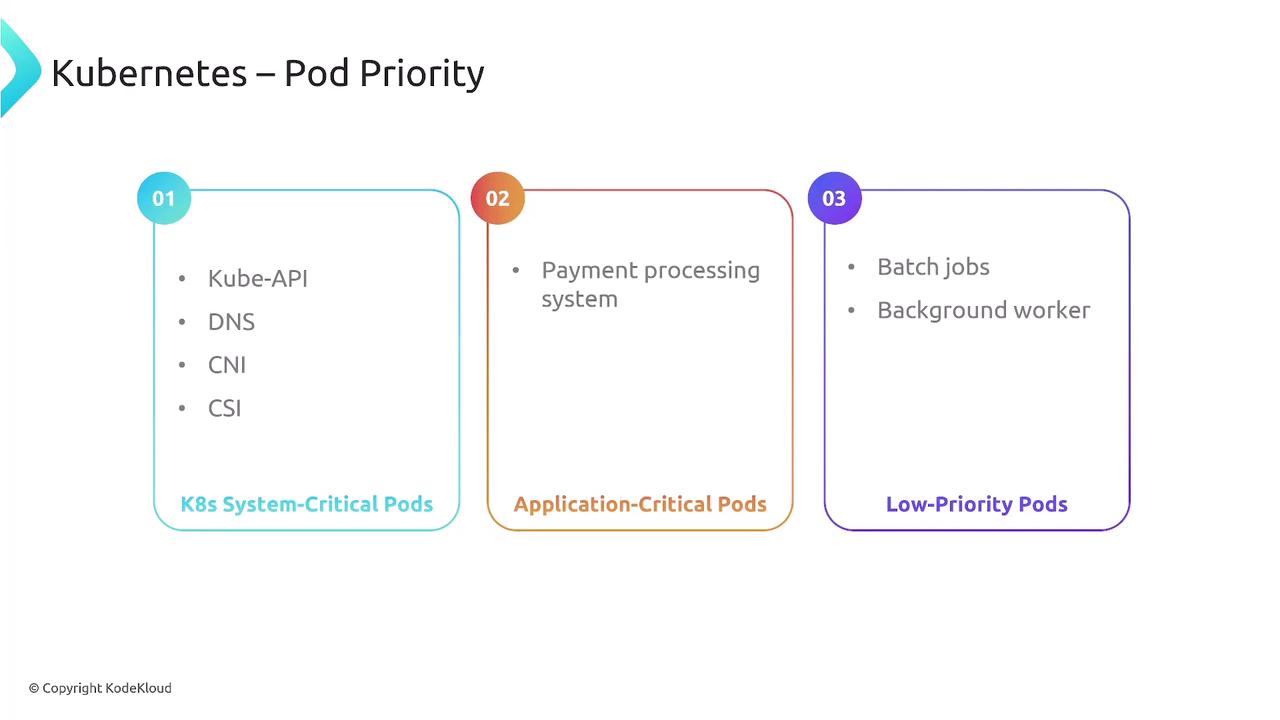
Preemption
When a VIP arrives and the hall is full, a regular guest may be asked to give up their seat. Kubernetes preemption evicts lower-priority Pods to make room for higher-priority ones.
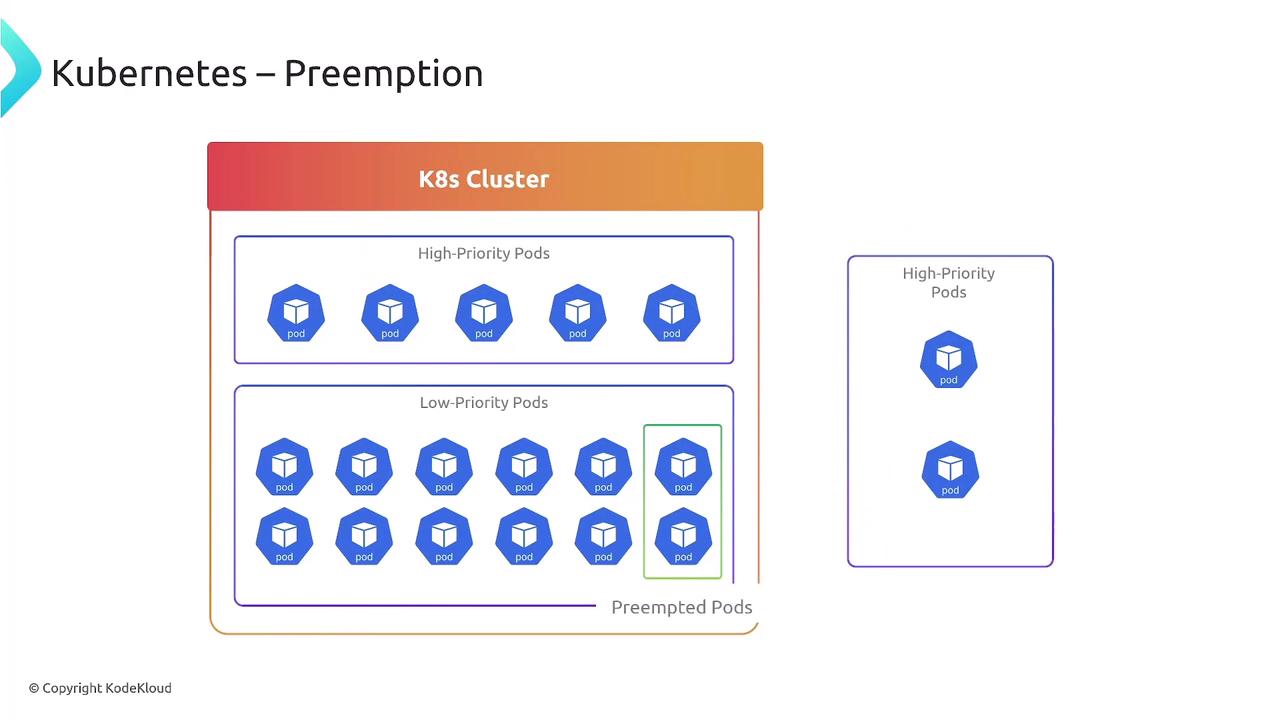
Kubernetes supports two preemption policies:
| Policy | Behavior |
|---|---|
| PreemptLowerPriority | Evict lower-priority Pods to schedule this Pod (default) |
| Never | Prevent this Pod from being preempted by any higher-priority Pod |
preemptionPolicy: PreemptLowerPriority
preemptionPolicy: Never
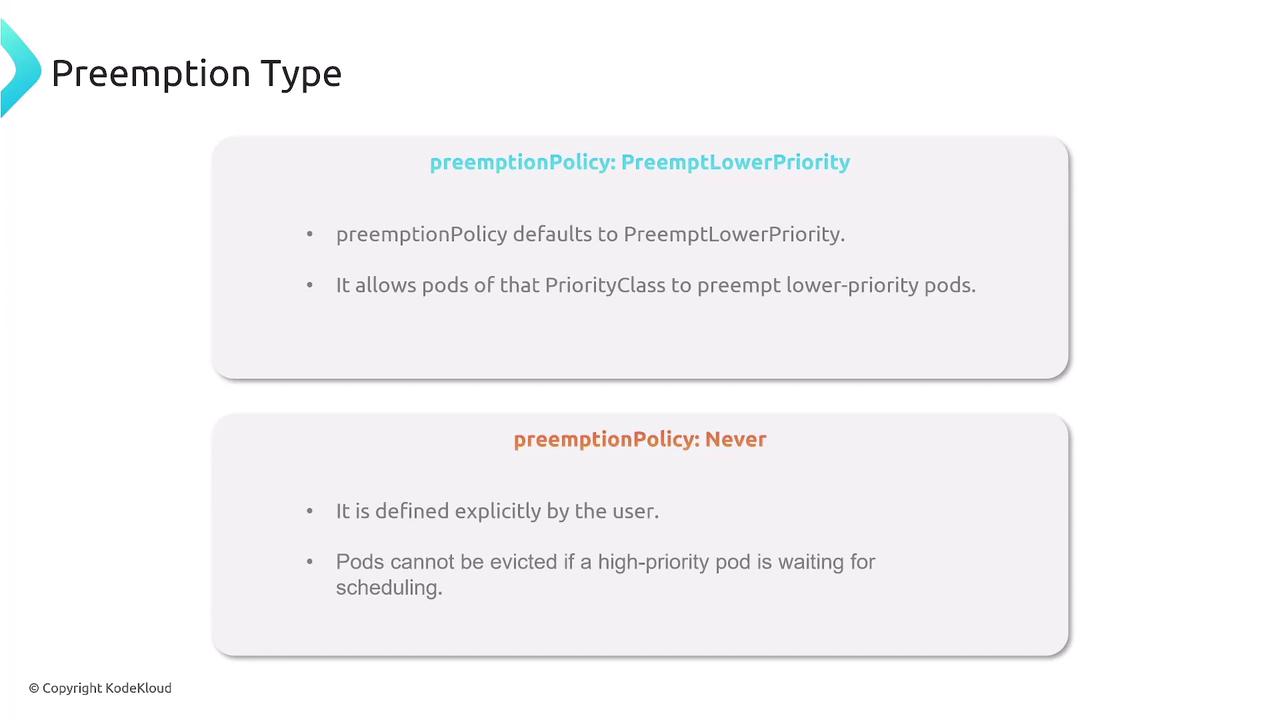
Pod Priority combined with Preemption ensures that mission-critical workloads run even under resource contention.
Defining Priority Classes
Priority classes assign a numeric weight to Pods. Higher values mean higher scheduling priority.
Create a high-priority class:
apiVersion: scheduling.k8s.io/v1
kind: PriorityClass
metadata:
name: high-priority
value: 1000
globalDefault: false
description: "Critical workloads get this priority."
Create a low-priority class:
apiVersion: scheduling.k8s.io/v1
kind: PriorityClass
metadata:
name: low-priority
value: 500
globalDefault: false
description: "Batch jobs and non-critical tasks."
Note
If you do not specify a PriorityClass, Pods default to priority 0.
Assigning Priority to Pods and Deployments
Add priorityClassName in your Pod or Deployment spec to apply a priority class:
Pod example:
apiVersion: v1
kind: Pod
metadata:
name: high-priority-pod
spec:
priorityClassName: high-priority
containers:
- name: nginx
image: nginx
Deployment example:
apiVersion: apps/v1
kind: Deployment
metadata:
name: high-priority-deployment
spec:
replicas: 3
selector:
matchLabels:
app: high-priority-app
template:
metadata:
labels:
app: high-priority-app
spec:
priorityClassName: high-priority
containers:
- name: nginx
image: nginx
Default System Priority Classes
Kubernetes ships with built-in priority classes for system Pods:
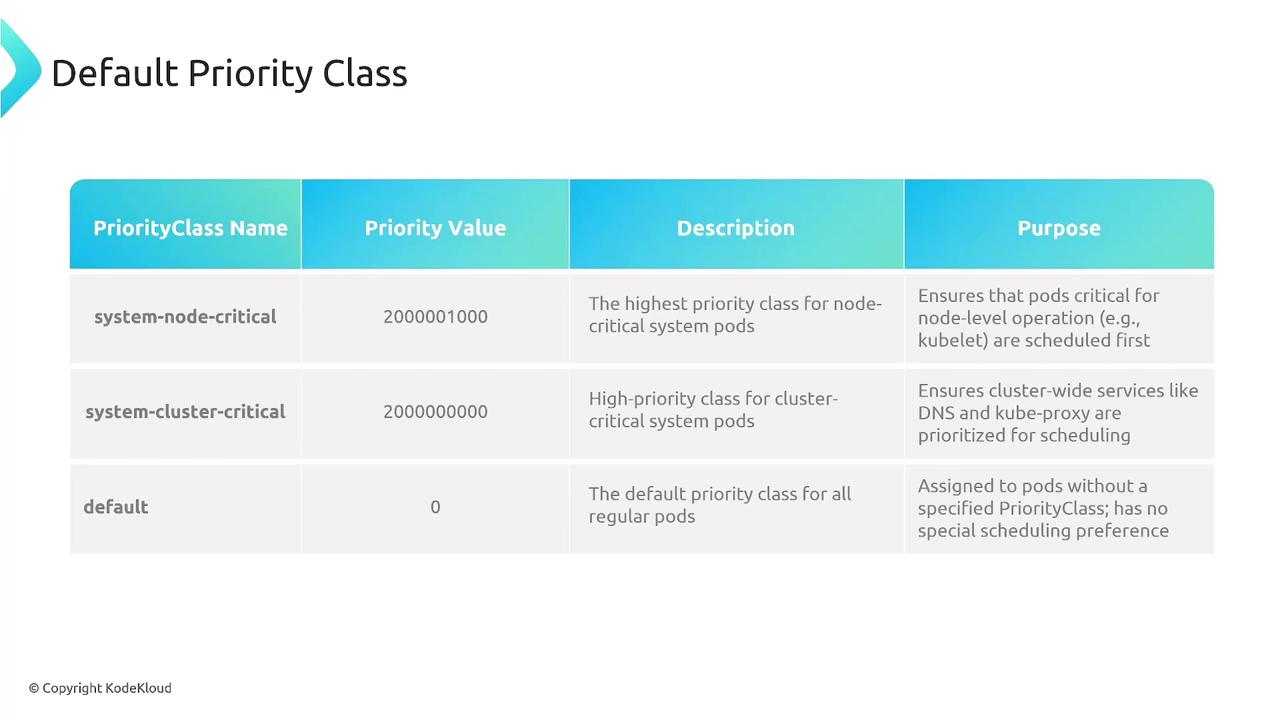
- system-node-critical: Pods essential for node health.
- system-cluster-critical: Pods essential for cluster services.
- No
priorityClassName→ priority0.
Controlling Pod Preemption
To make a Pod immune from eviction, set preemptionPolicy: Never:
apiVersion: v1
kind: Pod
metadata:
name: non-preemptible-pod
spec:
priorityClassName: low-priority
preemptionPolicy: Never
containers:
- name: nginx
image: nginx
Warning
Using preemptionPolicy: Never can lead to resource starvation for higher-priority workloads. Apply with caution.
Preemption is enabled by default. Only Pods with preemptionPolicy: Never are protected from eviction.
References
Watch Video
Watch video content
Practice Lab
Practice lab